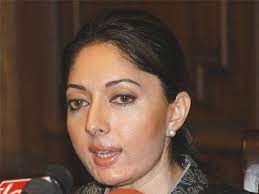The current crisis in the judiciary can exacerbate the severity of other crises. The division in the judiciary is not in the interest of the country. Politicians cannot be held solely responsible for this crisis, as it is not historically accurate. A former prime minister was sentenced to death by a selected prime minister chosen by the judiciary and the decision was carried out. Two elected prime ministers were disqualified and the courts upheld these decisions. The courts also validated the presidential orders to dismiss two elected governments under Article 58(2)b of the constitution, a notorious provision of the past. Even a military commander was given the authority to make amendments to the constitution, as per the court’s decision. Therefore, it cannot be said that politicians alone are responsible for the current crisis in the judiciary. If the actions of the past are taken into account, then it is not wrong to conclude that they are also responsible for the current crisis in the judiciary.
However, there are some fresh factors in this crisis. This crisis arose when the Chief Justice of Pakistan, Honorable Justice Umar Ata Bandial, took notice of the provincial assembly elections in Punjab and Khyber Pakhtunkhwa himself and formed a nine-member bench to hear the case. The Pakistan Muslim League (N) expressed a lack of confidence in Justices Ejaz ul Haq and Mazahir Akbar Naqvi, who were part of the bench, and both esteemed judges recused themselves from the bench, leaving a seven-member bench. During the hearing, two more esteemed judges, Justice Athar Minallah and Justice Yahya Afridi, voluntarily recused themselves from the bench by saying that the Chief Justice could not take suo moto notice in this matter. Despite this, the Chief Justice decided to continue with the hearing of the case with the five-member bench. On the basis of the majority decision (3-2), this bench ordered the Election Commission to announce the schedule for the elections. Following this decision, the announcement was made to hold the elections in Punjab on April 30. This decision was immediately controversial. Two judges of the five-member bench, Justice Jamal Mandokhail and Justice Mansoor Ali Shah, expressed disagreement with this decision and used harsh language like “one-man show” for the Chief Justice.
They likened the use of the Chief Justice’s suo motu powers to interference in the political system. The Pakistan Democratic Movement and the Pakistan Peoples Party rejected this decision and took the position that it was not a five-member but a seven-member bench, of which four judges rejected the suo motu notice. Justice Athar Minallah clarified in his detailed decision that the decision was 4-3. Thus, the judiciary was divided over the differences of the judges themselves.
Although the Election Commission had already announced the election schedule in Punjab based on two or three decisions, the government took the position that it was impossible to provide the funds and security required for the elections. Based on this, the Election Commission apologized for holding elections in Punjab and Khyber Pakhtunkhwa. In response, the Pakistan Tehreek-e-Insaf again approached the Supreme Court. The Chief Justice formed a new five-member bench. When the hearing of this case began, the senior most judge of the Supreme Court, Justice Qazi Faez Isa, heard the case of giving 20 extra marks to Hafiz-e-Quran candidates, in which he said that until the rules regarding the Chief Justice’s suo motu powers are not clear, all suo motu cases should be stopped from being heard.
During the hearing of a case, Justice Amin-Ud-Din, who was also a part of the new five-member bench, decided to separate from the bench. When the hearing started the next day, it was discovered that the remaining four-member bench had also disbanded because Justice Jamal Mandokhail had disagreed with forming the bench under the Chief Justice and exercising suo motu powers. However, the Chief Justice decided to continue the hearing with a three-member bench. This bench unanimously declared the decision to appoint the Election Commission as void and ordered the election to be held in Punjab on May 14. But the objection of the four judges who were part of the old seven-member bench on the day this decision was made still remains in question. On the same day, the Chief Justice formed another six-member bench which declared a decision related to regulating the powers of Justice Faiz Isa’s suo motu authority as void. This is how the suo motu case on the Punjab elections became the apparent cause of the division in the judiciary. The judiciary must end its own crisis. In the same suo motu case, the judiciary should also make a decision on the issue of analyzing the assemblies of Punjab and Khyber Pakhtunkhwa, on which there was no legal basis for analysis. The judiciary should also decide whether, if the elections of two provincial assemblies are held simultaneously, what legal complexities will arise later.
Both respected parties have raised questions about these two cases. They cannot be left unresolved. Otherwise, the country may suffer not only a judicial crisis but also major political and constitutional crises.
The Pakistan Tehreek-e-Insaf (PTI) has approached the court against the Supreme Court Practice and Procedure Bill, which pertains to the Chief Justice’s suo motu powers and bench formation. The court is not accepting the demand of political parties to constitute a full court bench. This means that the crisis will continue. If the constitutional status of the assemblies of Punjab and Khyber Pakhtunkhwa had been determined earlier, the crisis would not have arisen.
Now the court is asking political parties to negotiate together for elections. If this point had been resolved at the same time when the respected judges raised this issue, the crisis would not have arisen. They also want the political crisis in the country to end and conditions created to control the economic crisis.

